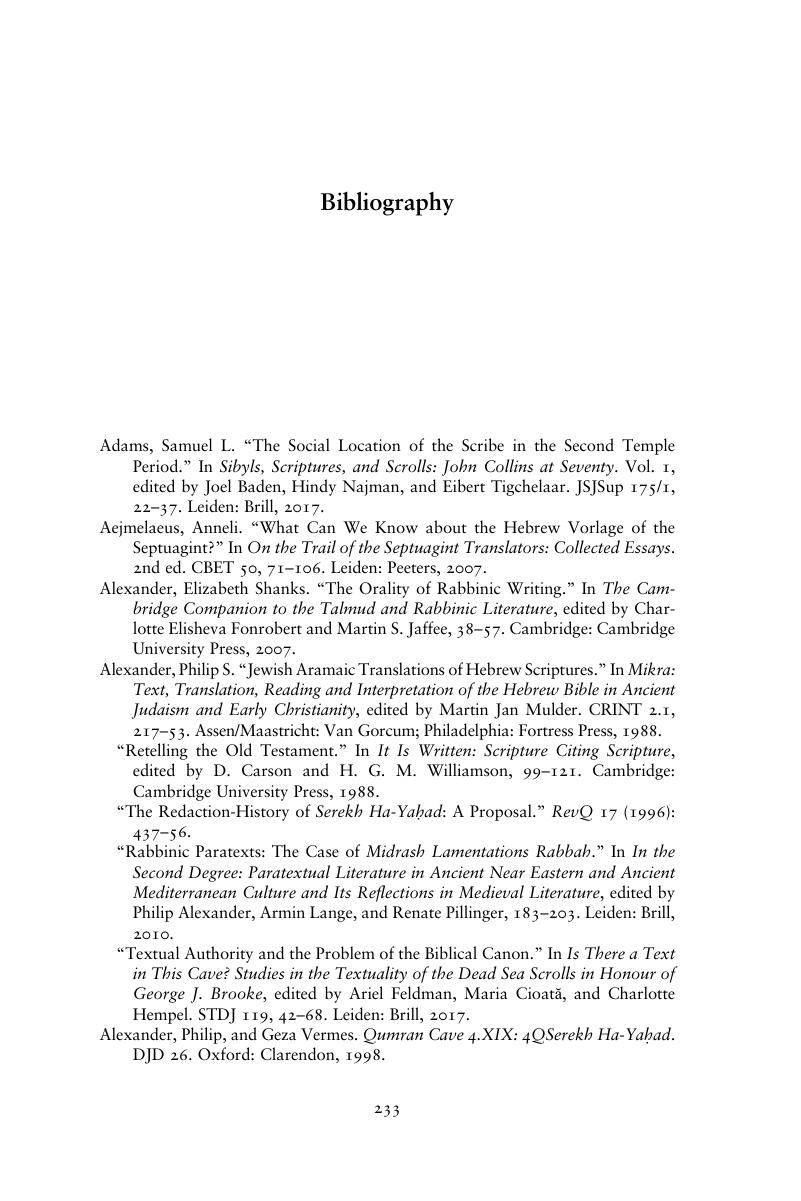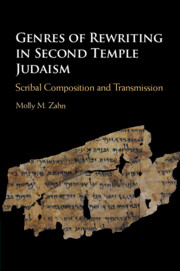Book contents
- Genres of Rewriting in Second Temple Judaism
- Genres of Rewriting in Second Temple Judaism
- Copyright page
- Contents
- Figures
- Tables
- Acknowledgments
- Abbreviations
- Introduction
- 1 Rewriting, Revision, and Reuse
- 2 Genre and Rewriting
- 3 Revision and Reuse in the Bible
- 4 Beyond “Rewritten Bible”
- 5 Translation and/as Rewriting
- 6 Diverse Genres of Reuse
- 7 Second Temple Rewriting in Context
- Conclusion
- Bibliography
- Index of Ancient Sources
- Subject Index
- References
Bibliography
Published online by Cambridge University Press: 05 June 2020
- Genres of Rewriting in Second Temple Judaism
- Genres of Rewriting in Second Temple Judaism
- Copyright page
- Contents
- Figures
- Tables
- Acknowledgments
- Abbreviations
- Introduction
- 1 Rewriting, Revision, and Reuse
- 2 Genre and Rewriting
- 3 Revision and Reuse in the Bible
- 4 Beyond “Rewritten Bible”
- 5 Translation and/as Rewriting
- 6 Diverse Genres of Reuse
- 7 Second Temple Rewriting in Context
- Conclusion
- Bibliography
- Index of Ancient Sources
- Subject Index
- References
Summary

- Type
- Chapter
- Information
- Genres of Rewriting in Second Temple JudaismScribal Composition and Transmission, pp. 233 - 254Publisher: Cambridge University PressPrint publication year: 2020

